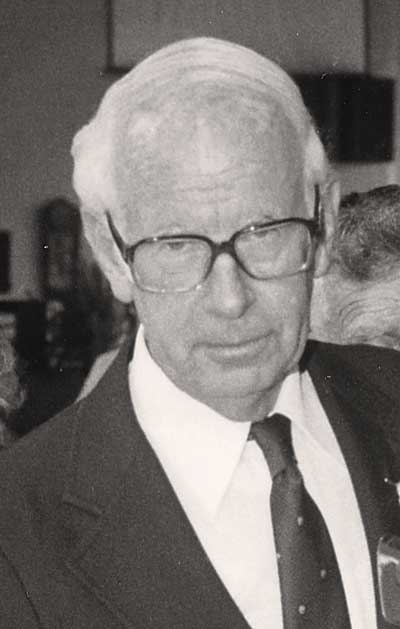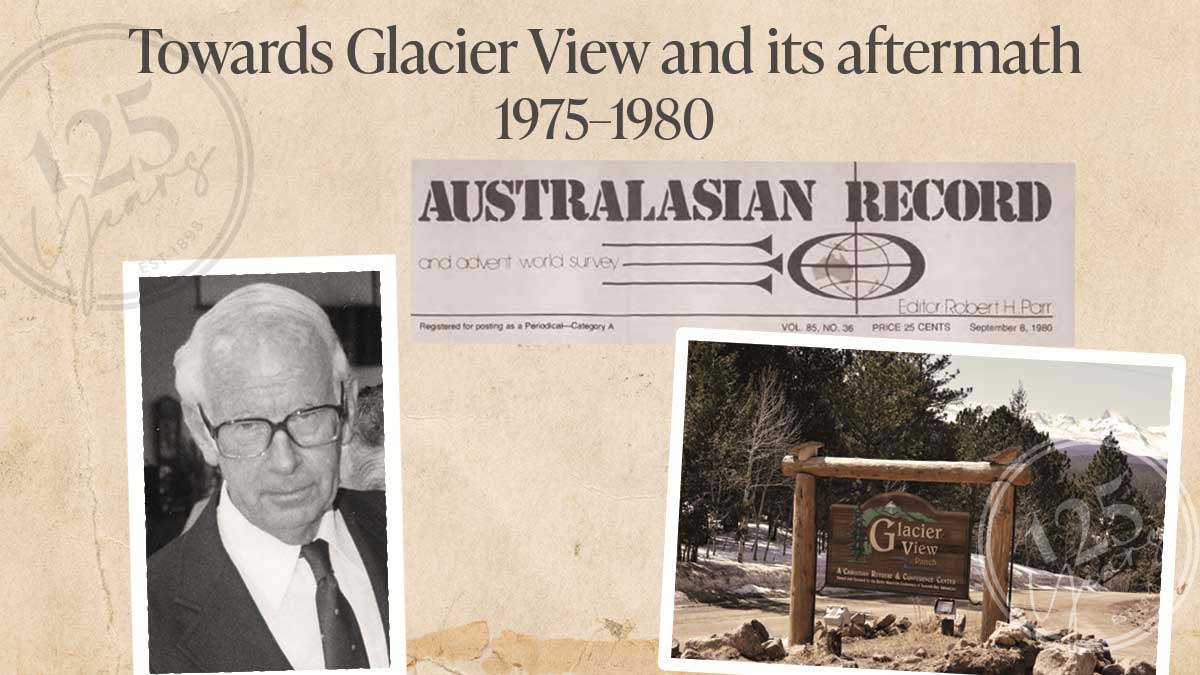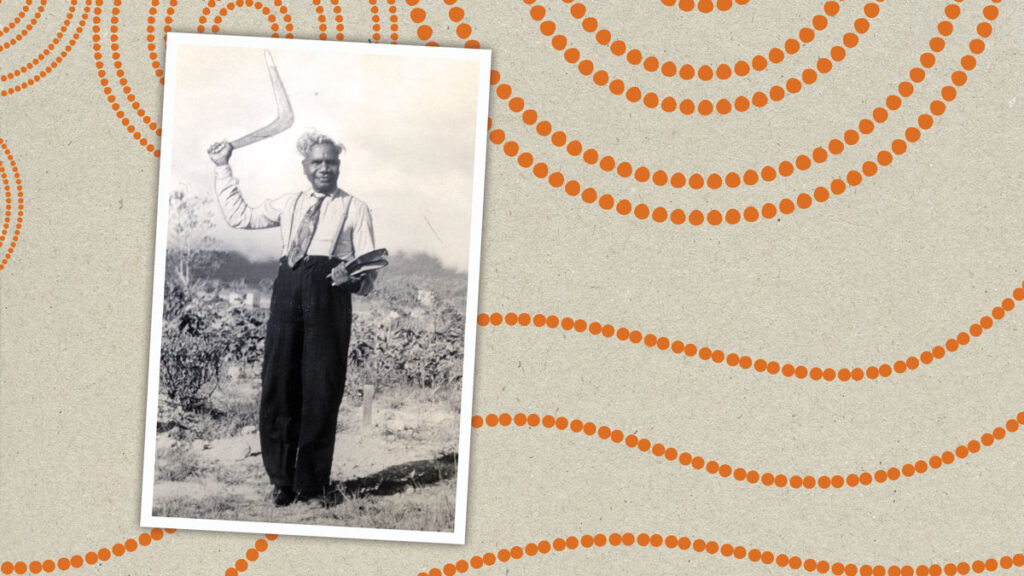The events of Glacier View in August of 1980 (as covered by Adventist Record in the September 8 issue) sparked great interest, dissention and debate amongst Adventists worldwide with repercussions echoing even to the present. Between August 10 and 15, 1980, the Sanctuary Review Committee, a group of 115 Bible scholars, theologians and church administrators, gathered together to hear and discuss the views proposed by Avondale lecturer and Australian theologian Desmond Ford in his teachings and writings.
While some of these discussions had appeared in the pages of Record in the lead up to this event, this was the pivotal event of this time period. For those who may not be familiar with the events of that era, the Glacier View gathering was tasked with the responsibility of evaluating the growing “non-traditional interpretations” of the Adventist Church’s sanctuary doctrine, with particular emphasis placed on examining the veracity of Ford’s 991-page research dissertation on the investigative judgement. In 1979, Ford’s teachings had caused confusion amongst church members and theologians.
On October 27, 1979, Ford had made a public presentation at Pacific Union College (PUC) on the topic, “The Investigative Judgement: Theological Milestone or Historical Necessity?”, suggesting in his presentation that the Adventist Church harboured flaws in its teachings on the sanctuary.
The Record of January 14, 1980, reports Ford was given leave of absence from teaching to “devote his full time to continued research and preparation of a documented statement on the topic of the sanctuary and related issues”. Following this six-month leave of absence, Ford was invited to the Glacier View Conference to review his findings (July 14, 1980 issue). What the conference found was most challenging in his assertions was the claim that the doctrine of the sanctuary, “as traditionally held by Adventists”, could not be supported “directly or solely” by Scripture (Adventist Review reprinted in Record).
These views led some to doubt the accuracy and reliability of Adventist theology, as these views cut right to the heart of Adventism’s origins, including the understanding of the significance of 1844, the Advent Movement and the Great Disappointment.
Glacier View was an attempt to put to rest this confusion and come to an understanding of the proper interpretation of prophesy regarding the investigative judgement. Former Adventist Review editor, Raymond Cottrell, described the meeting as “the most important event of this nature in Adventist history since the 1888 General Conference in Minneapolis” (which had discussed and established righteousness by faith in Adventist doctrine) (reprinted in Record from Adventist Review).

The Record (September 8 issue in 1980; vol 85:no36) covered in great detail many of the theological deliberations, implications, and questions which arose from the Glacier View Conference. In fact an eight-page insert was reprinted from Adventist Review, with reporting from Australian William Johnsson and a forward note from K S Parmenter, Australiasian Division president.
Three consensus statements emerged from the deliberations of the Sanctuary Review Committee. The first concerned the principle of Christ’s service in the heavenly sanctuary; the second concerned the role of Ellen G White’s writings in doctrinal matters; and the third set forth the major points of difference between the views expressed in Ford’s document and the consensus achieved at Glacier View (85:36).
In the same issue, Pastor Parmenter included the editorial “Wedges”. In it, he encourages church members not to become reliant on theologians or scholars, and laments that there is a communication gap in the Church. To address that, he said, the Church had voted to provide Record to every Adventist home.
“The provision of a copy of the AUSTRALASIAN RECORD for every Adventist home is one recent action taken to ensure that we have an informed membership in our churches. But we must look for other ways of communicating with each other as the Advent family enlarges.”
It is clear that church leadership was aware of the danger of misinformation, speculation and accusation that was rife in the wake of Glacier View.
For onlookers, questions and opinions about the events, led to rumours and challenges arising in relation to the Church’s treatment of Ford during the conference. “Articles, letters, and documents written by people who were not at Glacier View (and hence received their information second-hand or third-hand) have been circulated, apparently attempting to surround the meeting with a climate of mystery. These reports have contained speculation, distortions of fact, falsehoods, and statements that tend to undermine confidence in church leadership” (December 8, 1980, Record).
In a commitment to keeping church members informed concerning events that affect and interest them, the Adventist Review composed an editorial “to respond to recent rumours and questions”, which was published in Record.
One of the queries raised was the question of whether there was a sharp division among the members at the Glacier View Conference over the theological views. In response to this question, it was observed that: “The unity was remarkable, produced, we believe, by the Holy Spirit. Doubtless no two people—whether theologians, administrators, or others–will see things exactly alike; there will always be some differences of opinion; but at Glacier View administrators and scholars agreed with each other as consistently as administrators agreed with administrators and scholars agreed with scholars. The majority of both groups were thoroughly satisfied that the historic positions of the church have better support than the alternative positions offered.”
The teachings and views of Desmond Ford marked a significant period in Adventist history, resulting in both a shaking and a strengthening of Adventist doctrine, forcing one and all to look critically at their beliefs and search the Scriptures for proof of them. No belief was beyond reproach and all matters were re-assessed for their biblical accuracy.
Unfortunately, this period of doctrinal challenge resulted in the loss of many from the Church, and from the faith.
It is clear looking back at this time, that Record was a key vehicle for communication with church members, and church leaders were very aware of the importance of that communciation in the life and confidence of the church.
Other interesting notes:
- Students from Newcastle Adventist High School, NSW found a human skeleton while orienteering (January 3, 1977).
- Avondale launched a new “nursing course for Adventist young people” (December 1, 1980).
- Speaking of Avondale, it features prominently in almost every issue of the time, including one editorial, “Young, earnest and ambitious for God”, which encourages young people, “Then here is my word of advice: GO! Write today for information; tell them you read this and decided to come; they’ll put out the red carpet for you; 1977 is going to be a vintage year. Be part of the action!” (January 3, 1977).
- In November 1979, the executive committee of the Division voted to provide Adventist Record free to church members.






